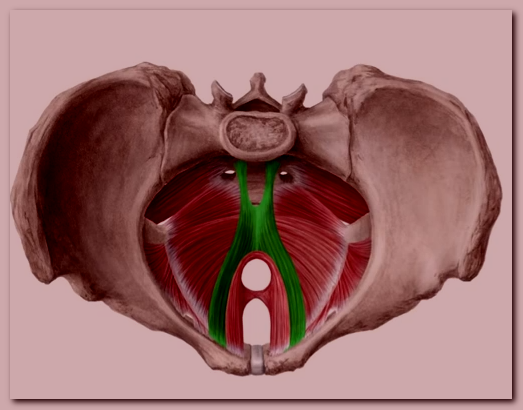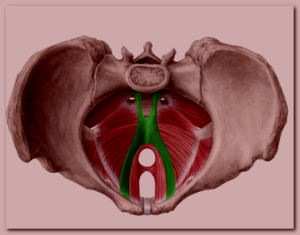The levator ani is a major muscle present within the pelvic area. It lowers and elevates the anal sphincter as well as relaxes and tightens for numerous bodily tasks and functions. Levator ani syndrome is a type of persistent proctalgia that is marked by constant rectal pain. It is differentiated from non-specified functional anal-rectal pain and other types of persistent proctalgia during a rectal examination, wherein when the levator ani muscle is touched then patients may elicit tenderness of the muscle.
The main symptom of levator ani syndrome is muscle spasm and tenderness of the muscle. Patients may also experience high distress discomfort, pressure, and pain in the rectal region, the sacrum, and the coccyx. Coccyx discomfort often worsens when sitting.
Doctors are not aware about the causes of levator ani syndrome. However, medical experts believe that arcus tendon inflammation may be one of the possible causes. As per estimates, about 6 percent of men and 7 percent of women in the general population are affected by the condition. The condition often tends to occur during middle age.
Levator ani syndrome is also referred to by many other names such as levator ani spasm, coccygodynia, chronic proctalgia, puborectalis syndrome, proctodynia, piriformis syndrome, proctalgia fugax, and pelvic tension myalgia.
Symptoms of levator ani syndrome
Some of the common signs and symptoms of levator ani syndrome are listed below:
- People with levator ani syndrome tend to suffer from prolonged and chronic pain, or a dull ache, which occurs about 2 inches above and in the left side of the anus, or sometimes higher up in the rectum, as well as burning sensations and/or sensations of continuous rectal pressure.
- Some patients describe the pain, pressure, and dull ache as if a ball was inside their rectum or that they were forever sitting on a ball.
- The associated pain often lowers the overall quality of life and causes increased misery.
- The discomfort and pain often tends to worsen during bowel movements when the feces exerts pressure on the levator ani muscle while getting expelled; during sexual activities; and when they are sitting. Patients, especially those with sporadic episodes of pain, may find relief from the pain by lying down or standing up.
- The condition has no psychosomatic origin, but increased stress can trigger bouts of levator ani muscle pain.
- Levator ani syndrome persists due to increased anxiety, tension, protective guarding, stress, and pain. Hence, once the condition develops, it often takes a life of its own.
- Any kind of manual pressure exerted on the levator ani muscle can result in elevated pain and discomfort.
- Some affected individuals may also report of constipation, pain in the low back or the tailbone, and relief or commencement of pain after a bowel movement. In the past, doctors often used the term coccygodynia to describe the condition. It may however be noted that only very few patients tend to suffer from tailbone/coccygeal pain.
- Pain may be elicited during a digital-rectal examination by pressing or exerting pressure on a small section inside the levator ani muscle and other interior muscles. The levator tissue may feel like a taut strap or band. Sometimes, the tenderness may be isolated or more intense on one side.
- Occasionally, levator ani syndrome may occur or co-exist with pain after or during sexual intercourse or with other adverse symptoms of the urinary system.
- Some patients tend to show considerable elevations on hypochondriasis, hysteria, and depression scales of the MMPI. This is often observed in all patients with chronic pain.
- Proctalgia fugax is a variant of levator ani syndrome. It is characterized by severe rectal pain which is typically felt at night. It often awakens the affected person from deep sleep.
Diagnosis
- Doctors arrive at a diagnosis of levator ani syndrome, just like other FGDs or functional gastrointestinal disorders, after ruling out the presence of other health disorders. Thus, patients need to undergo only those tests that physicians recommend so as to exclude other conditions.
- Doctors will then make the diagnosis as per chronic proctalgia Rome III criteria which states that the affected person must suffer from bouts of recurrent or chronic rectal ache or pain that persists for a minimum of twenty minutes and which occurs along with puborectalis muscle tenderness.
Treatment of levator ani syndrome
- Therapy for levator ani syndrome is usually provided by colorectal surgeons or proctologists. However, other kinds of doctors such as urologists, gastrointestinal specialists, and physical therapists may also help treat such patients.
- There was no efficient treatment for levator ani syndrome till recently. Now varied studies and research work has proved that the condition can be treated with varied therapies such as therapeutic ultrasound, electrogalvanic stimulation, biofeedback, sitz baths, botulinum toxin A injections, and digital massage of the affected muscles of the levator ani. Of these, biofeedback has been found to be really effective and a better treatment option than the rest.
- It is now known that associated pain in some patients, even if the pain persists for many tears, can be effectively alleviated via proper treatment.
- Massaging the painful levator ani spastic muscle on a regular basis along with intake of muscle relaxants and warm baths has yielded good results. Doctors will often suggest patients to take hot baths every night for about 15 to 20 minutes.
- Some therapists have suggested the use of an electric heating pad which can be applied in the region of the levator ani muscle or anal area when sleeping.
- Some affected individuals may not respond well to massage. Such patients may be given electrogalvanic stimulation, wherein oscillating current with a low frequency is applied to the affected muscle to induce fatigue and fasciculation, thereby breaking the spastic. This therapy has been effectively used by doctors to treat and rehabilitate spastic muscle groups; hence it is actively pursued as a treatment option.
- Walking, Kegel exercises, and other tightening exercises of the pelvis can help find relief from the discomfort.


Overall, is especially designed to cater to all your needs as much as we cant escape the fact that became guilty by association.
continue with the the nice work on the site. Do like it! :p Could use some more frequent updates, but i am sure you got some better things to do like we all do.